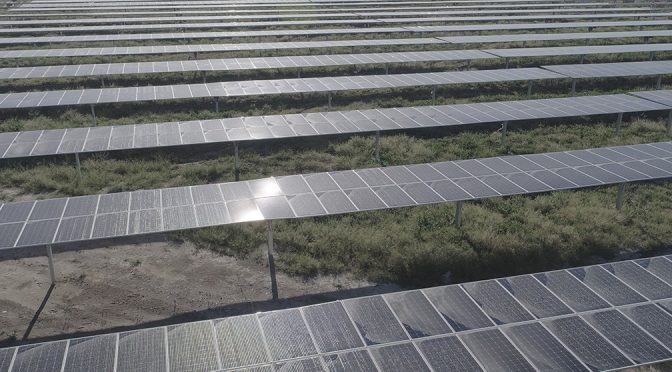EDF Renewables North America today announced the execution of a 20-year virtual power purchase agreement (VPPA) with Thermo Fisher Scientific, the world leader in serving science. The VPPA covers the full output of the 200-megawatt ac/256 MWdc Millers Branch Solar Project, which is located in Texas and slated for commercial operation in December 2025. With the addition of Miller’s Branch to Thermo Fisher’s renewable energy procurement portfolio, the Company has purchased enough renewable energy to match 100% of its current annual electricity consumption in the U.S. by 2026.
“The purchase of low carbon electricity from Millers Branch Solar supports Thermo Fisher’s progress toward its net-zero commitment. The project will also contribute to the local economy – the construction phase will provide job creation, local spending with vendors, and an expanded tax base,” said Valerie Barros, Senior Director of Origination and Power Marketing at EDF Renewables. “We applaud Thermo Fisher for taking bold action to power its U.S. sites with 100% renewable electricity and are honored to partner with them on these long-term purchase agreements.”
Once complete, the project is expected to generate 545,000 MWh of renewable energy annually, enough to meet the consumption of nearly 51,000 average homes1. This is equivalent to avoiding over 386,000 metric tons of carbon (CO?) emissions annually which represents the greenhouse gas emissions from over 83,000 gasoline-powered passenger vehicles driven over the course of one year2.
EDF Renewables, one of the largest renewable developers in North America, is committed to providing solutions to meet our customer’s carbon-reduction goals. With 35 years of experience and 24 gigawatts of wind, solar, and storage projects developed, EDF Renewables provides integrated energy solutions from grid-scale power to electric vehicle charging.
1 According to U.S. Energy Information Administration (EIA) 2020 Residential Electricity Sales and U.S. Census Data and typical transmission assumptions.
2 According to U.S. EPA Greenhouse Gas Equivalencies calculations and typical transmission assumptions.
